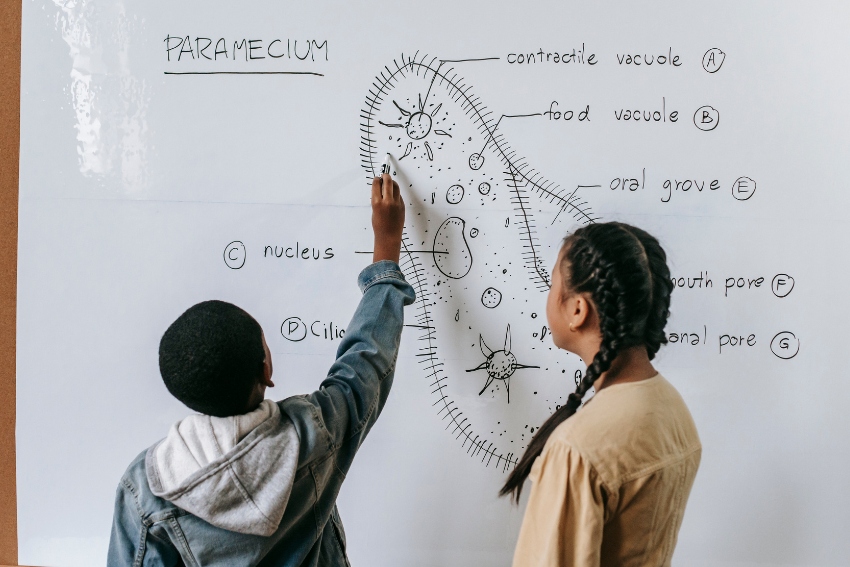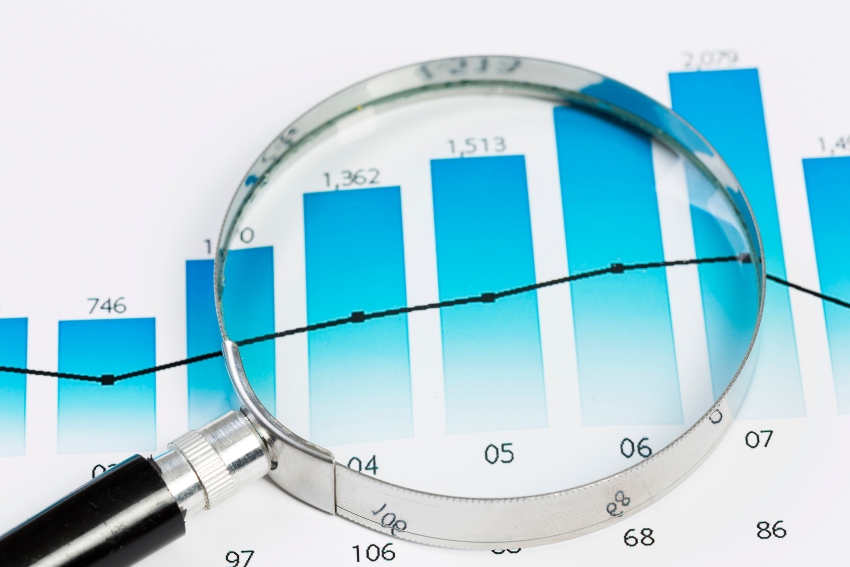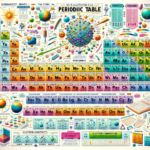Discovering the Human Nervous System: Your Body’s Superhighway
A Quick Overview
The human nervous system is akin to a complex superhighway network, where information is the vehicle, and neurons (nerve cells) are the roads. The central nervous system (C.A.N.) is the command centre, and the peripheral nervous system (P.N.S.) is the vast roadway reaching every corner of your body. They work together in marvelous harmony to keep you functioning and reacting to the world around you.
Breaking Down the Central Nervous System
The Brain: Your Personal Supercomputer
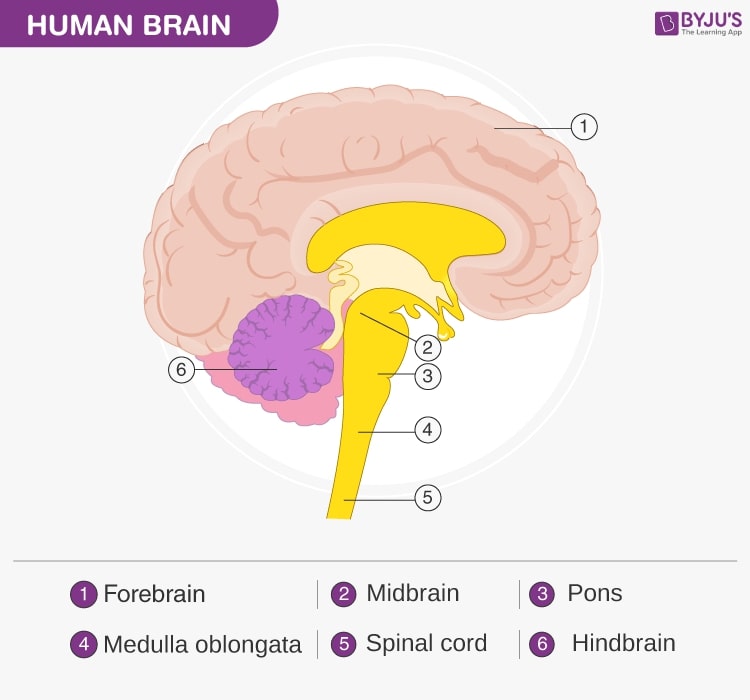
If the nervous system is a superhighway, the brain is the grand command centre, directing traffic and making crucial decisions. It’s split into several parts, each with a unique role, like different departments in a business.
- The Cerebrum: This is the CEO of your brain-business, controlling voluntary actions, making decisions, and housing your conscious thoughts. It’s the largest part of your brain. So when you decide to reach for a slice of pizza, or solve a tricky math problem, thank your cerebrum!
- The Cerebellum: Consider this as the company’s operations manager. It’s behind-the-scenes, ensuring smooth coordination, maintaining balance and fine-tuning motor skills. Every time you ride a bike, type on a keyboard, or even balance a book on your head, the cerebellum is at work.
- The Brainstem: This is the dependable utility department, quietly managing essential automatic functions like breathing, heart rate, and blood pressure. It’s working hard even when you’re fast asleep!
The Spinal Cord: The Information Superhighway
The spinal cord is a two-way superhighway, sending messages from your brain to your body and back. It helps relay messages about sensations and controls body movements. For instance, if you accidentally touch a hot stove, sensory neurons in your skin send a message via the spinal cord to your brain, which quickly sends a return message to move your hand away. That’s why you jerk your hand back even before you consciously realise it’s hot!
Exploring the Peripheral Nervous System
Moving beyond the central hub, we find the peripheral nervous system, your body’s vast roadway network. This system is further divided into:
- Somatic Nervous System: These are like your local roads, controlling voluntary movements and reflex arcs. Every time you decide to do a crazy dance move or accidentally step on a Lego and yelp in pain, you can think of this system.
- Autonomic Nervous System: This is your body’s interstate network, managing involuntary actions. It’s further divided into the sympathetic (accelerator, gearing you up for ‘fight or flight’ responses) and parasympathetic (brakes, calming you down and promoting ‘rest and digest’) divisions. So, when your heart races because you saw a spider, or when it slows down as you relax with a book, it’s your autonomic nervous system doing its thing.
There you have it! From the grand command centre of your brain to the far-reaching roads of your peripheral nerves, your nervous system is an incredible network. It’s working tirelessly to keep you interacting with, reacting to, and understanding the world around you. Next time you make a decision, feel something, or simply breathe, remember the amazing superhighway that is your nervous system.
The Brain: The Command Centre of the Body
A Sneak Peek Into The Brain
Think of the brain as your personal supercomputer 🧠. It’s not only the physical stuff inside your head, but it’s also where you reside. Yes, you! Your thoughts, your emotions, your memories, all of them live in the bustling metropolis that is your brain.
Diving Deeper: Understanding the Brain’s Structure
The brain is a labyrinth of intricate structures, each with its own responsibilities. Here are the main ones:
- The Cerebrum: The largest part of your brain, responsible for all your conscious thoughts and actions. Whether you’re contemplating the mysteries of the universe, deciding on a pizza topping, or painting a masterpiece, it’s the cerebrum at work.
- The Cerebellum: Your body’s unsung hero, the cerebellum ensures you don’t stumble over your feet and can ride a bike or write a letter. It’s a wizard at keeping balance and coordinating smooth, precise movements.
- The Brainstem: Think of this as your autopilot. It takes care of the stuff you don’t have to think about: breathing, heart rate, blood pressure. You wouldn’t be able to enjoy a good night’s sleep without the brainstem on duty!
Your Brain’s Superpowers: Functions of the Brain
The brain’s role is multi-faceted. On one hand, it’s a grand librarian 📚, storing your precious memories. On the other, it’s a talented orchestra conductor 🎵, coordinating your movements. It’s also your body’s master electrician ⚡, transmitting information in the form of electrical signals across a network of nerve cells, or neurons.
From helping you solve complex problems, appreciate a beautiful sunset, remember the lyrics to your favourite song, to making your heart flutter when you see your crush, the brain is the wizard behind the curtain.
Your brain is indeed a marvel, an organ like no other. It’s your best friend, your confidante, and the essence of your individuality. And to think, all this and more are happening right now, inside your head! So, the next time you have a bright idea 💡, don’t forget to thank your brain for its constant, tireless work.
The Eye: A Window to the World

Understanding the Eye’s Structure
The eye is a complex, sophisticated organ that allows us to perceive the world in vibrant colours and depth. Here’s a breakdown of its primary components:
- Cornea: This transparent front layer of the eye helps to focus incoming light.
- Pupil: The small black circle in the centre of the eye, it adjusts size to regulate the amount of light that enters the eye.
- Iris: The coloured part of your eye, which controls the size of the pupil.
- Lens: This clear structure further focuses light onto the retina, much like a camera lens.
- Retina: Lined with light-sensitive cells (rods and cones), it converts light into electrical signals.
- Optic nerve: It carries these signals from the retina to the brain, which interprets them as visual images.
How the Eye Works
The process of seeing is a fascinating journey that starts when light from an object enters your eye. This light passes through the cornea, enters the eye through the pupil, and is then further focused by the lens onto the retina at the back of your eye.
The retina is a like a movie screen for your personal cinema. It’s populated with millions of photoreceptor cells, rods (which help you see in dim light and perceive shades of grey) and cones (which help you see in bright light and perceive colours). These cells detect the light and create electrical signals.
These signals embark on a journey through the optic nerve, a kind of information highway, to the brain. Once they reach the brain, they’re interpreted as the images you see. This entire process happens almost instantaneously, enabling you to experience the world in real-time.
Your eyes are incredibly precious. They allow you to experience everything from the joy of reading a good book to the beauty of a stunning sunset. So, it’s crucial to take good care of them, ensuring they remain a window to the world for your entire life.
Body Temperature Control: Your Personal Thermostat
The Importance of Temperature Regulation
Our bodies are a bit like Goldilocks 🐻 – we don’t like it too hot or too cold; we need it just right. Maintaining a stable internal body temperature is crucial for our survival. Most of our body’s enzymes, the catalysts of our biochemical reactions, work best around 37°C. Any significant deviations can cause these enzymes to work less efficiently or even stop working altogether!
Sweating it Out and Shivering Away
When it’s hot out there ☀️, our body has a built-in cooling mechanism: sweating. When we sweat, the water on our skin evaporates, taking some of our body’s heat with it and thus cooling us down.
On the other hand, when it’s chilly ❄️, our body’s got a clever trick up its sleeve: shivering. When we shiver, our muscles rapidly contract and relax, generating heat to keep us warm.
The Hypothalamus: The Body’s Thermostat
Overseeing these reactions is the hypothalamus, a small part of the brain that acts like a thermostat. When it senses that our body temperature is straying away from the ideal 37°C, it sends signals to adjust our body’s heat production and loss, ensuring we stay in that Goldilocks zone.
Whether it’s a hot summer day or a cold winter night, your body is always working to maintain that optimal temperature. So, next time you find yourself reaching for a cold drink 🥤 or wrapping up in a warm blanket 🛌, remember your body’s incredible ability to keep everything ‘just right’.
Hormonal Coordination in Humans: Your Body’s Messaging System
The Endocrine System: The Body’s Messaging Service
Hormones are your body’s version of post-it notes 📝, delivering important messages from one part of the body to another. The endocrine system, a network of glands throughout the body, produces these hormones and sends them into the bloodstream to reach their destinations.
Glands and Hormones: A Dynamic Duo
Different glands produce different hormones, each with its own special function. Here are a few key players:
- Pituitary Gland: Known as the ‘master gland’, it produces hormones that control several other endocrine glands.
- Thyroid Gland: It produces thyroxine, which regulates metabolism, growth and development.
- Adrenal Glands: They produce adrenaline, preparing your body for ‘fight or flight’ responses in stressful situations.
- Pancreas: It produces insulin and glucagon, which regulate blood glucose levels.
- Ovaries/Testes: The ovaries produce estrogen and progesterone (important for menstrual cycle and pregnancy), and the testes produce testosterone (important for puberty and sperm production).
Hormones: Long-Distance Runners
Unlike the quick responses of the nervous system, hormonal coordination is a long-distance runner 🏃. Hormones are released into the bloodstream and travel throughout the body. They’re slower than nerve impulses, but their effects can be long-lasting, impacting everything from growth and development to your daily mood and energy levels.
So, whether you’re sprinting for the bus, savouring a delicious meal, or dealing with a stressful situation, remember that your hormonal system is working tirelessly in the background, delivering important messages and coordinating your body’s responses.
Maintaining Water and Nitrogen Balance in the Body: A Balancing Act
The Importance of Water Balance
Our bodies are over 60% water 💧. Maintaining a balance of this vital substance is crucial for our survival as it’s involved in almost every bodily function, from digestion and nutrient transport to temperature regulation and waste removal.
The Kidneys: Water Regulation Champions
The kidneys are the body’s superstars when it comes to managing water balance. They filter our blood and adjust the amount of water excreted in urine based on the body’s needs. When we’re well hydrated, they excrete more water. If we’re dehydrated, they conserve water, producing concentrated urine.
Sweating and Breathing: Water Loss in Action
We not only lose water through urination but also through sweating and breathing. These losses must be compensated by consuming fluids and water-rich foods 🥤🍉.
Nitrogen Balance: Protein’s Journey
Nitrogen balance refers to the equilibrium between the amount of nitrogen we take in (primarily through protein in our diet 🥩) and the amount we lose (mainly through urine). When these two are in balance, we say the body is in “nitrogen equilibrium.”
The Liver and Kidneys: Nitrogen Processing Team
The liver breaks down excess amino acids (the building blocks of protein) and converts the nitrogen in them to a waste product called urea. The kidneys then step in, removing this urea from the blood and excreting it in urine.
Maintaining water and nitrogen balance is a delicate yet vital task your body performs around the clock. It’s a key part of ensuring all systems are running smoothly, keeping you healthy and energized. So, next time you quench your thirst or enjoy a protein-rich meal, spare a thought for the intricate balancing act happening inside you.
Hormones in Human Reproduction
Hormones: The Conductors of the Reproductive Symphony
In the intricate ballet of human reproduction, hormones are the conductors, guiding each step with precision. They regulate the menstrual cycle in women, control the production of eggs and sperm, and even play a key role in nurturing a new life during pregnancy.
Key Players in the Hormone Symphony
Let’s meet the main hormone maestros:
- Follicle-Stimulating Hormone (FSH): Produced by the pituitary gland, FSH signals the ovaries to mature an egg each month and stimulates the testes to produce sperm.
- Luteinizing Hormone (LH): Also produced by the pituitary gland, LH triggers ovulation (release of the mature egg) in women and stimulates the testes to produce testosterone in men.
- Estrogen: Produced by the ovaries, estrogen regulates the menstrual cycle and prepares the uterus for possible pregnancy.
- Progesterone: Also produced by the ovaries, progesterone maintains the uterus lining for pregnancy. If pregnancy doesn’t occur, progesterone levels fall, and the menstrual cycle begins anew.
- Testosterone: Produced by the testes, testosterone drives sperm production and is responsible for the male secondary sexual characteristics.
The Ballet of Reproduction
This ballet of hormones ensures the mature egg and sperm can meet for fertilization. If fertilization occurs and an embryo implants into the uterus lining, a new set of hormones, like human chorionic gonadotropin (hCG) and placental lactogen, step in to support pregnancy 🤰.
So, from the rhythmic dance of the menstrual cycle to the miracle of new life, hormones play an integral role. Each step of human reproduction is delicately choreographed by these powerful substances, orchestrating the beautiful dance of life.
Contraception: Taking Charge of Reproduction
What is Contraception?
Contraception allows individuals and couples to prevent or plan pregnancy. From hormonal methods to barrier methods, there’s a wide range of contraceptive options available. The key is finding one that best fits your health, lifestyle, and reproductive goals.
The Toolbox of Contraception
Here’s a quick rundown of some common contraceptive methods:
- Condoms: Acting as a barrier, they prevent sperm from meeting an egg. Bonus: they also protect against sexually transmitted infections (STIs)!
- Birth Control Pills: These contain hormones (usually a mix of estrogen and progestin) that prevent ovulation and thicken cervical mucus, making it harder for sperm to reach an egg.
- Intrauterine Device (IUD): This small device is inserted into the uterus. Hormonal IUDs release progestin, which thickens cervical mucus and thins the uterine lining, while copper IUDs create an environment that’s toxic to sperm.
- Emergency Contraception: Also known as the ‘morning-after pill’, it can prevent pregnancy if taken within 72 hours of unprotected sex.
- Implants and Injections: These long-acting hormonal methods prevent ovulation and thicken cervical mucus to prevent sperm from reaching an egg.
Making Informed Choices
Each method has its own set of pros, cons, and efficacy rates. Factors like ease of use, health considerations, personal preferences, and future reproductive plans should be considered when choosing a contraceptive method. Always consult a healthcare provider to understand your options and make an informed decision 💡.
Contraception empowers individuals and couples to take control of their reproductive health and family planning. By providing a range of options, it ensures everyone can find a method that suits them, helping them live healthier, more fulfilling lives.
Infertility: Understanding the Challenges of Conception
What is Infertility?
Infertility is defined as the inability to conceive a child after a year or more of regular unprotected intercourse. It can affect both men and women and is quite common, affecting about 1 in 6 couples.
Causes of Infertility
Infertility can result from various factors:
- In Women: Issues with ovulation, damage to the fallopian tubes or uterus, or problems with the cervix can lead to infertility. Age also plays a significant role, as fertility naturally decreases with age.
- In Men: Infertility can be caused by issues with sperm production or delivery, genetic factors, or certain lifestyle habits.
Sometimes, despite investigation, the cause remains unexplained.
Treatment Options
There’s a range of treatment options available, depending on the cause of infertility:
- Medication: Drugs can be used to stimulate ovulation in women or to deal with hormonal imbalances in either sex.
- Surgery: If physical issues are causing infertility, surgery may help. For example, surgery can be used to repair blocked fallopian tubes in women.
- Assisted Reproductive Technology (ART): This includes techniques such as in vitro fertilization (IVF), where an egg is fertilized outside the body and then implanted into the woman’s uterus.
- Lifestyle Changes: Sometimes, making certain lifestyle changes, such as maintaining a healthy weight, quitting smoking, or limiting alcohol intake, can improve fertility.
A Message of Hope
While dealing with infertility can be emotionally challenging, it’s important to remember that many couples successfully overcome it 🙌. Continued advancements in fertility treatments are opening up new doors for those looking to start a family. Always consult with a healthcare professional to understand your options and the best course of action.
Plant Hormones: The Secret Life of Plants
What are Plant Hormones?
Just like humans, plants have hormones too! 🌱 These are naturally occurring substances that regulate growth and development, helping plants respond to their environment.
The Major Plant Hormones
Let’s meet the key plant hormones and their roles:
- Auxins: These hormones promote cell elongation, meaning they help plants grow longer. They’re also involved in phototropism, the process that causes a plant to grow towards light 💡.
- Gibberellins: These hormones stimulate stem elongation, seed germination, and flowering. They work with auxins to promote growth.
- Cytokinins: These hormones promote cell division, or cytokinesis, in plant roots and shoots. They also help delay leaf senescence, or aging.
- Abscisic Acid (ABA): The main function of ABA is to inhibit growth. It’s particularly important for initiating dormancy in seeds and for closing stomata (the tiny openings in leaves) during times of water stress.
- Ethylene: This is a gas hormone that promotes fruit ripening and causes leaves to shed, or “abscise,” hence its name.
Hormones in Action: Phototropism and Gravitropism
Have you ever noticed how a potted plant will grow towards a window, bending its stem to reach for the light? That’s phototropism in action, and it’s regulated by auxins.
Similarly, gravitropism (or geotropism) is the process that directs roots to grow downwards, into the soil, and shoots to grow upwards, towards the light. This, too, is regulated by auxins and gibberellins.
Next time you observe a plant, remember that there’s a fascinating world of hormones working behind the scenes, guiding the plant’s responses to light, gravity, and so much more. Truly, plants have a secret life of their own! 🌿
Negative Feedback Systems: Nature’s Thermostat
What is a Negative Feedback System?
Imagine you’re driving a car and you start to drift off course. You’d correct your steering to get back on track, right? Negative feedback systems work similarly. They help maintain balance or ‘homeostasis’ in the body by reversing any deviation from a set point. It’s like the body’s natural thermostat, adjusting various physiological processes to keep things stable.
Negative Feedback in Action
Here are a couple of real-world examples:
- Body Temperature: If you’re too hot, your body will sweat to cool down. If you’re too cold, you’ll shiver to generate heat. These are examples of negative feedback, helping maintain a stable body temperature 🌡️.
- Blood Glucose Levels: After a meal, blood glucose levels rise. In response, the pancreas releases insulin, which helps cells absorb glucose and brings your blood sugar back down. If blood glucose levels drop (like when you’re hungry), the pancreas releases glucagon, which prompts your liver to release stored glucose.
The Importance of Negative Feedback
Negative feedback systems are crucial for survival. They allow organisms to adapt to changes in their environment while maintaining internal stability. Without these systems, our bodies wouldn’t be able to function properly.
So, next time you feel yourself start to shiver in the cold or sweat on a hot day, remember that it’s all thanks to the magic of negative feedback systems. Your body is constantly working to keep you balanced, comfortable, and healthy. It’s like having your very own built-in thermostat! 🌡️👍
Synapses: Highways of Communication in the Brain
What are Synapses?
Ever wondered how the brain communicates messages within itself? Meet the synapse, the minuscule gap where all the magic happens! It’s the junction between two nerve cells, allowing them to pass signals to each other.
How do Synapses Work?
Picture it like a super busy post office: one neuron (the presynaptic neuron) sends a message, and another neuron (the postsynaptic neuron) receives it. The message, or signal, is chemical in nature, carried by molecules called neurotransmitters. Here’s how it works:
- An electrical signal (action potential) travels along the neuron until it reaches the synapse.
- This causes small sacs (vesicles) in the neuron to release neurotransmitters into the synapse.
- These neurotransmitters cross the synapse and bind to receptors on the other neuron, like a key fitting into a lock 🔑.
- This binding can cause the receiving neuron to generate its own electrical signal, passing the message along. Alternatively, it might inhibit the neuron from generating a signal, effectively stopping the message.
- After the neurotransmitters have delivered their message, they’re either broken down by enzymes, absorbed back into the sending neuron (a process called reuptake), or simply diffuse away.
The Role of Synapses in Learning and Memory
Each of us has billions of synapses in our brain, forming a complex network of communication. It’s thought that changes in the strength of these synaptic connections – when they become more or less responsive to neurotransmitters – are a key mechanism for learning and memory. When you memorize new information or master a new skill, your synapses are hard at work!
So, next time you’re studying or learning something new, take a moment to appreciate your synapses. These tiny junctions are the unsung heroes of our nervous system, facilitating the intricate symphony of signals that makes up our thoughts, memories, and consciousness. 🧠💭🎶
Reflex Actions: The Body’s Superheroes
What are Reflex Actions?
Ever touched a hot stove and instantly pulled your hand away before even realizing it was hot? That’s a reflex action at work! Reflex actions are automatic, quick, and involuntary responses to certain stimuli that help to protect our bodies from harm.
How do Reflex Actions Work?
Reflex actions are controlled by reflex arcs, which bypass the brain to deliver super speedy responses. Here’s how it works:
- A receptor (like your skin) senses a stimulus (like a hot stove) 🔥.
- A sensory neuron carries this signal to the spinal cord.
- Inside the spinal cord, the sensory neuron passes the signal to a relay neuron.
- The relay neuron then passes the signal to a motor neuron.
- The motor neuron carries the signal from the spinal cord to an effector (like a muscle) which performs the appropriate response (like pulling your hand away).
The Power of Reflex Actions
The magic of reflex actions is that they don’t involve the brain, making them incredibly fast 🏎️. This speed is crucial when our bodies are in danger. By the time we become aware of the danger and feel the pain, the reflex action has already moved us away from harm.
So, reflex actions are like the body’s superheroes, always on guard and ready to leap into action to keep us safe. Remember, every time you blink at a gust of wind or recoil from a sharp object, you’ve got your reflexes to thank! 🦸♂️💥
Effects of Drugs on the Nervous System: An Inside Look
Drugs and the Nervous System: The Basics
Our nervous system is like a grand orchestra, with billions of neurons working together to produce the symphony that is our thoughts, feelings, and reactions. But what happens when drugs enter the scene?
Drugs, both legal and illegal, can influence the nervous system’s functioning by interacting with neurons and altering their activities. Some can have therapeutic effects, while others can cause significant harm.
Prescription Drugs: The Helpful Side
Medically prescribed drugs are used to alleviate symptoms, treat conditions, and improve quality of life. For instance:
- Painkillers: Drugs like paracetamol or opioids act on the nervous system to reduce the sensation of pain.
- Antidepressants: These medicines can affect neurotransmitters in the brain, like serotonin, helping to improve mood and reduce anxiety.
Recreational Drugs: The Dark Side
While some drugs are helpful, others, especially when misused, can lead to severe health problems:
- Alcohol: It acts as a depressant, slowing down the brain’s activity. It can impair judgment, coordination, and reaction times in the short term, while chronic use can lead to addiction and long-term health problems.
- Cannabis: This drug can have both depressant and hallucinogenic effects. It can affect perception, mood, and coordination, and long-term use can lead to cognitive impairments and mental health issues.
- Cocaine and Amphetamines: These stimulant drugs can increase heart rate, blood pressure, and dopamine levels in the brain, leading to feelings of intense euphoria. However, they can also lead to addiction, heart problems, and severe mental health disorders.
The Key Message
Our nervous system is a finely tuned machine, and introducing drugs into the mix can have substantial effects, both good and bad. It’s essential to understand these effects, as misuse can lead to life-altering consequences. So, treat your nervous system with respect – it’s the only one you’ve got! 🧠💖
Blood Glucose Regulation: The Body’s Sugar Management
The Importance of Blood Glucose
Glucose, a type of sugar, is the main source of energy for our body’s cells. When you eat carbohydrates, your body breaks them down into glucose. This is absorbed into your bloodstream, giving you the energy you need to go about your day. But how does your body keep glucose levels in check? Let’s find out! 🕵️♀️
The Dynamic Duo: Insulin and Glucagon
The regulation of blood glucose involves two key hormones, insulin and glucagon, which work together like a thermostat to keep your blood glucose levels just right.
- Insulin is the hero when blood glucose levels are high, like after a meal. It’s produced by beta cells in the pancreas and helps cells take in glucose for energy. Any extra glucose is stored in the liver for later use. Insulin is like a key that unlocks cells to let glucose in. 🔑
- Glucagon comes to the rescue when blood glucose levels are low, like when you haven’t eaten for a while. It’s produced by alpha cells in the pancreas and tells the liver to convert the stored glucose back into the bloodstream. It’s like the body’s back-up energy generator. ⚡
What Happens When Regulation Goes Wrong?
Sometimes this balance can be disrupted, leading to conditions like diabetes:
- Type 1 Diabetes occurs when the immune system mistakenly attacks the insulin-producing cells in the pancreas. Without insulin, glucose can’t enter cells and builds up in the blood.
- Type 2 Diabetes is usually linked to lifestyle factors and occurs when cells become resistant to insulin. The pancreas tries to compensate by making more insulin, but over time it can’t keep up.
Both conditions result in high blood glucose levels, which can lead to serious health problems if not managed properly.
The Takeaway
The regulation of blood glucose is a fine balancing act performed by our body to ensure our cells get the energy they need without letting blood glucose levels get too high or too low. So next time you enjoy a meal, remember the amazing processes that go into managing that energy in your body. It’s a sweet example of your body’s incredible systems at work! 🍭💪🌟
The Menstrual Cycle: Nature’s Calendar
Understanding the Menstrual Cycle
The menstrual cycle is a monthly process that the female body goes through in preparation for potential pregnancy. But it’s not just about having a period; it’s a complex cycle involving the interplay of hormones, the ovaries, and the uterus. Let’s break it down! 📅💡
The Four Stages of the Menstrual Cycle
- Menstruation (Days 1-5): This is the stage most people are familiar with. If the egg released in the previous cycle wasn’t fertilized, the thickened lining of the uterus (the endometrium) breaks down and is shed, resulting in menstrual bleeding.
- Follicular Phase (Days 1-13): At the same time menstruation begins, the body is already preparing for the next cycle. The pituitary gland releases follicle-stimulating hormone (FSH), prompting the ovaries to prepare an egg for ovulation. The endometrium also starts to thicken again, getting ready in case an egg gets fertilized.
- Ovulation (Day 14): Around the middle of the cycle, a surge in luteinizing hormone (LH) causes the mature egg to be released from the ovary. This is the time when a woman is most fertile. 🥚🌟
- Luteal Phase (Days 15-28): After ovulation, the remnants of the follicle in the ovary form a structure called the corpus luteum. It produces progesterone to maintain the endometrium. If the egg isn’t fertilized, the corpus luteum breaks down, progesterone levels drop, and the cycle starts again with menstruation.
The Menstrual Cycle and Hormones
Four key hormones regulate the menstrual cycle: FSH, LH, estrogen, and progesterone. These hormones are like the conductors of an orchestra, each one cueing different parts of the body to play their role in the cycle.
The Takeaway
Understanding the menstrual cycle provides insight into the amazing processes that happen in the body every month. So whether you’re studying for an exam, or just curious, remember that this natural cycle is a vital part of human life and reproduction. It’s one of the many ways our bodies are truly remarkable! 📆🎶👏
Negative and Positive Tropism in Plants: The Dance of Growth
What is Tropism?
In the botanical world, plants can’t move around like animals. But they still need to react to their environment to survive. Tropism is the way plants grow in response to different stimuli. This growth can be towards the stimulus (positive tropism) or away from the stimulus (negative tropism). 🌱💃🕺
Types of Tropism
Let’s explore the two main types of tropisms:
- Phototropism is the growth of a plant in response to light. Most plants display positive phototropism, where they grow towards the light, which is why you might see houseplants bending towards a sunny window. In contrast, roots often display negative phototropism, growing away from the light and deeper into the soil.
- Gravitropism (or geotropism) is how plants grow in response to gravity. Roots exhibit positive gravitropism, growing downwards into the soil, while stems typically show negative gravitropism, growing upwards against gravity.
Plant Hormones: The Hidden Maestros
Behind the scenes, plant hormones called auxins are directing the dance. When light shines on one side of a plant, auxins move to the darker side, causing cells there to elongate and the plant to bend towards the light.
In the case of gravitropism, auxins redistribute towards the lower side of the plant or root. In stems, this promotes cell elongation and upward growth, while in roots, it inhibits growth, ensuring they grow downwards.
The Takeaway
Through negative and positive tropism, plants make sure they grow in the right direction to get all the light and nutrients they need. It’s a fascinating dance of growth, a testament to nature’s remarkable adaptations. So, next time you see a plant reaching for the sun, remember, it’s not just growing, it’s dancing! 🌿💡💃🕺
Phototropism and Geotropism: Nature’s Guiding Forces
Phototropism: The Light Seeker
Ever noticed how plants seem to lean towards the sunlight? This phenomenon is known as phototropism, and it plays a crucial role in helping plants get the light they need for photosynthesis.
In phototropism, the plant’s growth is directed by light. When light comes from one direction, a plant hormone called auxin moves to the side of the plant that’s away from the light, causing that side to grow more. This uneven growth makes the plant bend towards the light source. 🌻☀️
Think of it like a game of “tag” where light is “it,” and the plant is always trying to reach it. And in this game, everyone wins, especially the plant!
Geotropism: The Gravity Guru
Meanwhile, geotropism (also known as gravitropism) helps plants figure out which way is up and which way is down. This response to gravity is critical for different parts of the plant to grow in the right directions.
In geotropism, the roots show positive geotropism, growing downwards into the soil, while the shoots exhibit negative geotropism, growing upwards against gravity. This is all thanks to auxin again, which moves to the lower side of the plant or root and influences its growth direction. 🌱🪱🍎⬇️
So, geotropism ensures that the roots grow deep into the ground to absorb water and nutrients, and the shoots grow up towards the air and light where they can photosynthesize.
The Takeaway
Phototropism and geotropism are the plant world’s dynamic duo, guiding the plants’ growth towards the light and nutrients they need. It’s one of the many ways that nature has adapted to thrive in all sorts of environments. So, when you see a plant reaching for the sky or a root burrowing into the earth, remember, there’s a whole lot of science guiding those green thumbs! 🌳🌞🧭👍💚
Nervous vs. Endocrine Systems: Two Ways to Get the Message Across
When it comes to keeping the body running smoothly, the nervous system and endocrine system are like the control centres, each with its own way of getting the job done.
The Nervous System: Speedy Signals
The nervous system is all about speed. Imagine you touch a hot surface – you instantly pull your hand away, right? That’s your nervous system at work!
This system uses electrical signals (nerve impulses) to transmit information rapidly across the body. The central nervous system, consisting of the brain and spinal cord, interprets these signals and responds accordingly. 🧠⚡
If you think of your body as a city, the nervous system would be like the phone lines, sending quick, direct messages from one place to another.
The Endocrine System: Slow and Steady
On the other hand, the endocrine system takes the slow and steady approach. It uses hormones, chemical messengers that are released into the blood by glands like the thyroid, pancreas, and adrenal glands. These hormones travel through the bloodstream to reach their target cells, where they cause specific changes.
The endocrine system controls long-term processes like growth and development, metabolism, and reproduction. It’s slower than the nervous system, but its effects can be long-lasting. 🐢💪
In our city analogy, the endocrine system would be more like the postal service, sending messages (hormones) that take longer to arrive but can have wide-reaching and long-term effects.
The Takeaway
While the nervous and endocrine systems have different ways of sending messages, they work together to ensure our bodies respond appropriately to different situations. It’s a perfect example of teamwork, demonstrating the complexity and precision of the human body. So whether it’s a quick reaction or a long-term process, rest assured, your body has a system for that! 💌📞🤝💖
Endotherms and Ectotherms: Different Ways to Beat the Heat
Ever wondered why you can warm your hands on a mug of hot cocoa, while a lizard basks in the sun to warm up? That’s because humans are endotherms, while lizards are ectotherms, and these two groups have different ways of managing body temperature.
Endotherms: The Internal Heat Generators
Endotherms, like humans, birds, and most mammals, generate most of their body heat from within. That’s why we can stay active and warm even when it’s chilly outside. We’re like walking, talking heaters, burning calories to produce heat and maintain a stable internal temperature, no matter the weather. 🏃♀️🔥
Ectotherms: The Sunbathers
On the other hand, ectotherms, such as reptiles, fish, and amphibians, rely on the environment to help regulate their body temperature. They warm up by soaking up heat from the sun or a warm rock, and cool down in the shade or water. They’re a bit like solar panels, absorbing energy from the environment. 🦎☀️
The Takeaway
Whether endothermic or ectothermic, each method of temperature regulation has its pros and cons, and different animals have evolved to use the strategy that suits their lifestyle and environment best. So, next time you grab a sweater to fend off the cold, spare a thought for our ectothermic friends basking in the sun. After all, we’ve each got our own ways of staying cozy! 🧥🌞🤗
Osmoregulation in Different Organisms: The Balance Game
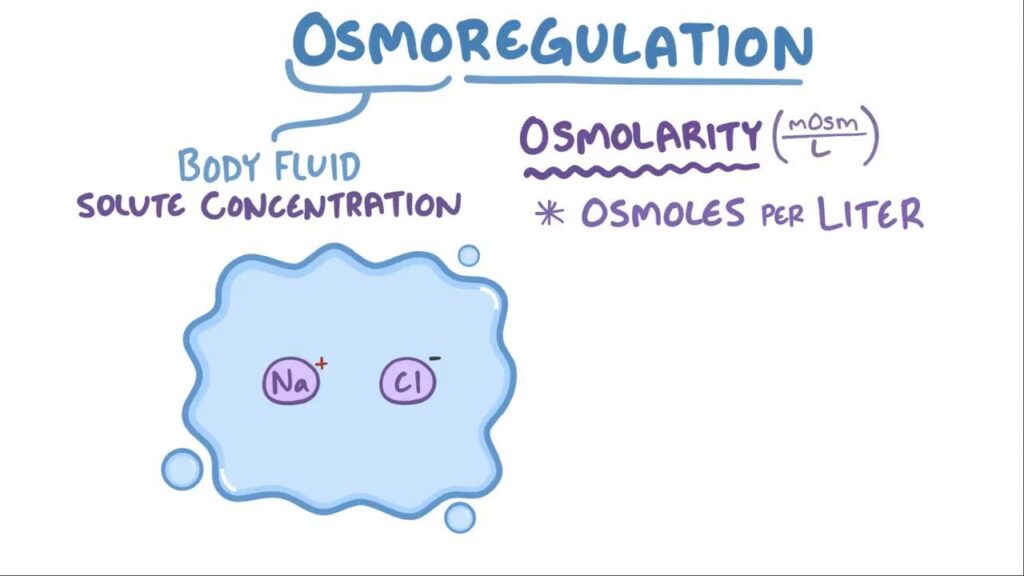
Life is all about balance, especially when it comes to water and salts in our bodies. This crucial balance, known as osmoregulation, varies among organisms, depending on their environments and lifestyles.
Osmoregulation in Humans: The Kidney’s Role
In humans, the main player in osmoregulation is the kidney. This organ filters our blood, removing waste and excess water to produce urine. When you’re dehydrated, your kidneys conserve water by producing concentrated urine. Conversely, when you’ve drunk a lot, your kidneys make more dilute urine to get rid of the excess water. 🚰🏋️♀️
Osmoregulation in Fish: Salt In, Salt Out
Fish also have interesting osmoregulatory tactics. Freshwater fish face a constant influx of water into their bodies due to a lower concentration of salts in their internal fluids than in their environment. They counteract this by producing large volumes of dilute urine. 🐠💦
On the other hand, marine fish have the opposite problem; they lose water and gain salt because the seawater around them is saltier. They actively drink seawater and excrete the excess salts through special cells in their gills. 🐟🌊
Osmoregulation in Plants: Root of the Matter
Plants, too, must regulate their water and salt balance. They primarily take up water and minerals from the soil through their roots. The roots’ cell membranes act as selective barriers, permitting the uptake of necessary nutrients while preventing potentially harmful substances from entering. Plant cells also have a rigid cell wall that provides additional protection against bursting if they absorb too much water. 🌿💧
The Takeaway
Osmoregulation keeps the internal environments of organisms stable, ensuring cells function correctly. Whether you’re a human, a fish, or a plant, maintaining this delicate balance is key to survival. It’s truly a matter of life and death, all in the name of balance. 🌍⚖️💙
Types of Neurons and Their Roles: The Brain’s All-Star Team
Neurons, or nerve cells, are the superheroes of the nervous system, carrying messages throughout the body. Like any good team, different types of neurons have different roles, each contributing to the overall function of the nervous system. Let’s meet the all-star line-up!
Sensory Neurons: The Scouts
Sensory neurons, also known as afferent neurons, are like the scouts of the nervous system. They collect information from our environment—like touch, light, sound—and send it to the brain and spinal cord. When you smell fresh bread or feel a tickle on your skin, it’s sensory neurons reporting back! 👃🍞🎯
Motor Neurons: The Doers
Motor neurons, or efferent neurons, are the doers, sending signals from the brain and spinal cord to muscles and glands, causing them to act. Whether you’re high-fiving a friend, blinking your eyes, or your stomach is churning to digest food, it’s the motor neurons calling the shots! 🖐️👀🍔
Interneurons: The Middlemen
Interneurons, also known as connector or relay neurons, are the largest group of neurons and serve as the communicators within the brain and spinal cord. They pass signals between sensory and motor neurons, as well as other interneurons. Think of them as the brain’s switchboard, ensuring messages get where they need to go. ☎️💬🔄
The Takeaway
Whether sensing, doing, or communicating, each type of neuron plays a critical role in how our nervous system functions. Together, they form a complex network of communication that keeps us interacting with and reacting to our world. So, the next time you catch a ball or smell a flower, take a moment to appreciate the all-star team of neurons that made it happen! 🏐🌷🌟
Role of Kidneys in Osmoregulation and Excretion: Your Body’s Filtration Superstars
Kidneys are like the superstar backstage crew of your body, working diligently behind the scenes to keep everything running smoothly. Their main roles? Osmoregulation and excretion. 🎭🌟
Kidneys and Osmoregulation: The Balancing Act
Osmoregulation is all about maintaining the right balance of water and salts in your body. Too much or too little, and things can go awry. That’s where the kidneys come in. These bean-shaped organs filter your blood, removing excess water and waste products to produce urine.
If you’re dehydrated, your kidneys conserve water by producing less, but more concentrated, urine. Had a bit too much to drink? They’ll produce more, but dilute, urine to help rid the body of the excess water. This delicate balancing act keeps your body’s internal environment stable. 💧⚖️
Kidneys and Excretion: The Cleanup Crew
Kidneys are also vital in removing waste from your body. When cells break down proteins for energy or to build other molecules, they produce a waste product called urea. Urea, along with other waste substances, is transported to the kidneys via the bloodstream.
In the kidneys, this waste is filtered out of the blood, combined with water, and transformed into urine. It’s then sent down the tubes—quite literally!—via the ureters to the bladder, where it’s stored until you’re ready to excrete it. 🗑️💦
The Takeaway
Kidneys play a critical role in keeping you healthy, adjusting the water-salt balance and removing waste from your body. So, while they might not get the spotlight as much as the heart or brain, these hardworking organs are essential members of your body’s all-star team. Give it up for the kidneys! 👏🎉
Diseases Related to Homeostasis Disruption: When Balance Goes Awry
Homeostasis keeps our body’s internal environment stable, but what happens when this balance is disrupted? Unfortunately, that can lead to a variety of diseases. Let’s delve into some examples. 🌡️🔬
Diabetes: The Sugar Story
Diabetes is a disease that occurs when homeostasis of blood glucose levels is disrupted. In a healthy body, the hormone insulin, released by the pancreas, helps regulate blood sugar levels by prompting cells to take in glucose. However, in diabetes, this regulation doesn’t work properly.
In type 1 diabetes, the immune system attacks insulin-producing cells, meaning the body can’t produce insulin. In type 2 diabetes, cells become resistant to insulin. Both types lead to high blood sugar levels, which can cause various health problems. 🍬🚫💉
Hypo- and Hyperthermia: Temperature Troubles
Our bodies are pretty good at maintaining a stable internal temperature, but in extreme cold or heat, this balance can be disrupted, leading to hypothermia or hyperthermia.
Hypothermia occurs when your body loses heat faster than it can produce it, causing a dangerously low body temperature. Hyperthermia, on the other hand, is an excessively high body temperature, often due to extreme heat or overexertion. Both conditions can be life-threatening. 🥶🔥😰
Kidney Disease: Filtration Failures
Kidneys play a critical role in homeostasis by filtering out waste and excess water from the blood. However, when kidneys are damaged, they may not be able to perform these functions properly, leading to a buildup of waste in the body. This can result in kidney disease, which can cause a host of health problems and may ultimately require dialysis or a kidney transplant. 🧊💔🏥
The Takeaway
Diseases related to homeostasis disruption remind us how crucial balance is in our bodies. It underscores the importance of the complex systems working tirelessly to keep our bodies functioning correctly. Even the smallest glitch can cause significant problems, further emphasizing why maintaining this balance is a matter of life and health. ⚖️🩺💙
Plant Responses to Environmental Stimuli: The Unseen Dance of Nature
Though they might seem still and silent, plants are constantly interacting with their environment and responding to a variety of stimuli. They might not have eyes, ears, or a nervous system, but plants are more perceptive than you might think! 🌿👀
Phototropism: Following the Sun
Phototropism is a plant’s growth response to light. Ever noticed how plants seem to lean towards the light? That’s phototropism in action! Plants grow towards the light to maximize their ability to capture light for photosynthesis, the process they use to make food. Sunflowers are famous for this; they follow the sun’s path throughout the day, turning their faces to greet the sunlight. 🌻☀️
Gravitropism: Feeling the Pull
Gravitropism, or geotropism, is how plants respond to gravity. Roots show positive gravitropism, growing downwards into the soil to anchor the plant and absorb water and nutrients. Stems, on the other hand, exhibit negative gravitropism, growing upwards against gravity to reach the light. It’s all about finding the perfect balance! ⬆️⬇️🌍
Thigmotropism: Touchy Subjects
Thigmotropism is a plant’s response to touch. Some plants, like vines, exhibit positive thigmotropism by coiling around objects they come into contact with, allowing them to climb and reach more sunlight. Ever seen a pea plant winding its way up a trellis? That’s thigmotropism in action! 🌿👆🌀
The Takeaway
From following the sun to feeling the pull of gravity, plants are continually sensing and responding to their environment, even without a brain or nervous system. These unseen dances with environmental stimuli are crucial for their survival. So next time you pass by a plant, remember – there’s more than meets the eye! 🕺🌱👀
Applications of Plant Hormones in Agriculture: Nature’s Toolbox
Plant hormones are like secret tools that nature uses to control growth, development, and responses to the environment. But did you know that we humans have figured out how to use these tools for our benefit in agriculture? Let’s dig into how we apply these plant hormones to help our crops thrive. 🌽🔨🌱
Auxins: Master Sculptors
Auxins are plant hormones that promote cell elongation, shaping the plant’s growth. Farmers use synthetic auxins to control plant growth, prevent premature fruit drop, and promote root development in cuttings. Ever bought a uniformly-shaped apple? That might be auxins at work, shaping the fruit as it grows! 🍏💪
Gibberellins: The Growth Promoters
Gibberellins stimulate stem elongation, germination, and flowering. In agriculture, they’re used to increase the size and yield of fruits and improve the malting process in brewing. So, that tall, lush crop in the field? Gibberellins may be helping it reach for the sky. 🌾🚀
Cytokinins: Age-Defying Wizards
Cytokinins promote cell division and delay the aging of leaves. They’re used in tissue culture and to extend the shelf-life of vegetables and cut flowers. So, those veggies and flowers staying fresh in your home for longer? You can thank cytokinins for that. 🥦🌼⏳
Ethylene: The Ripening Signal
Ethylene is a gas that promotes fruit ripening and leaf fall. Farmers use it to synchronize fruit ripening just before market, ensuring that all the fruit is ripe and ready at just the right time. Ever marveled at a bunch of bananas all ripening at the same rate? That’s ethylene at work! 🍌🕰️
The Takeaway
From shaping plants to extending freshness, plant hormones play a vital role in agriculture. These hormones are a testament to the wonderful complexity of nature and our ability to harness it for our benefit. So next time you’re at a supermarket, remember the secret world of plant hormones that helped bring that produce to your basket. 🛒🌱💚
